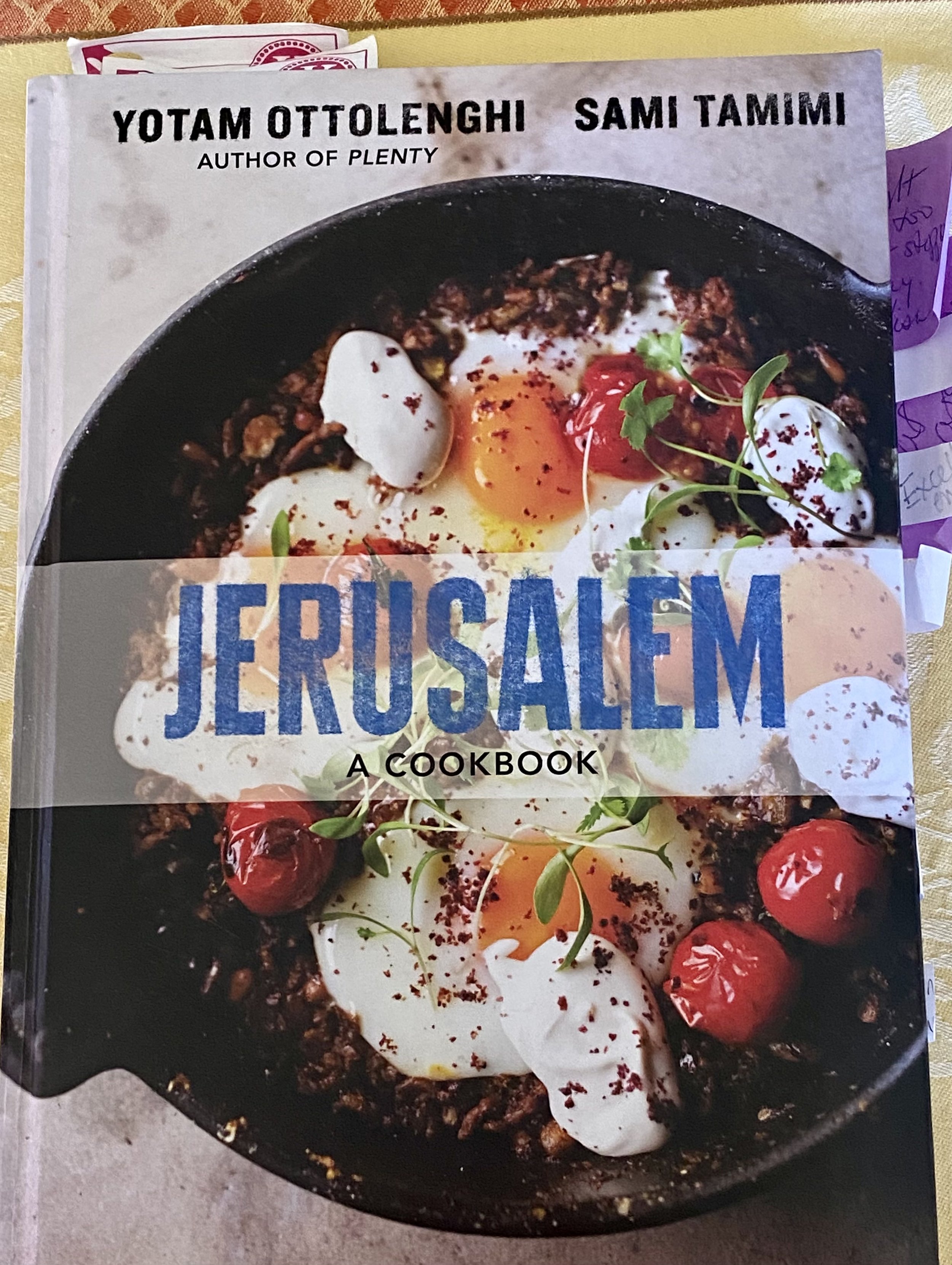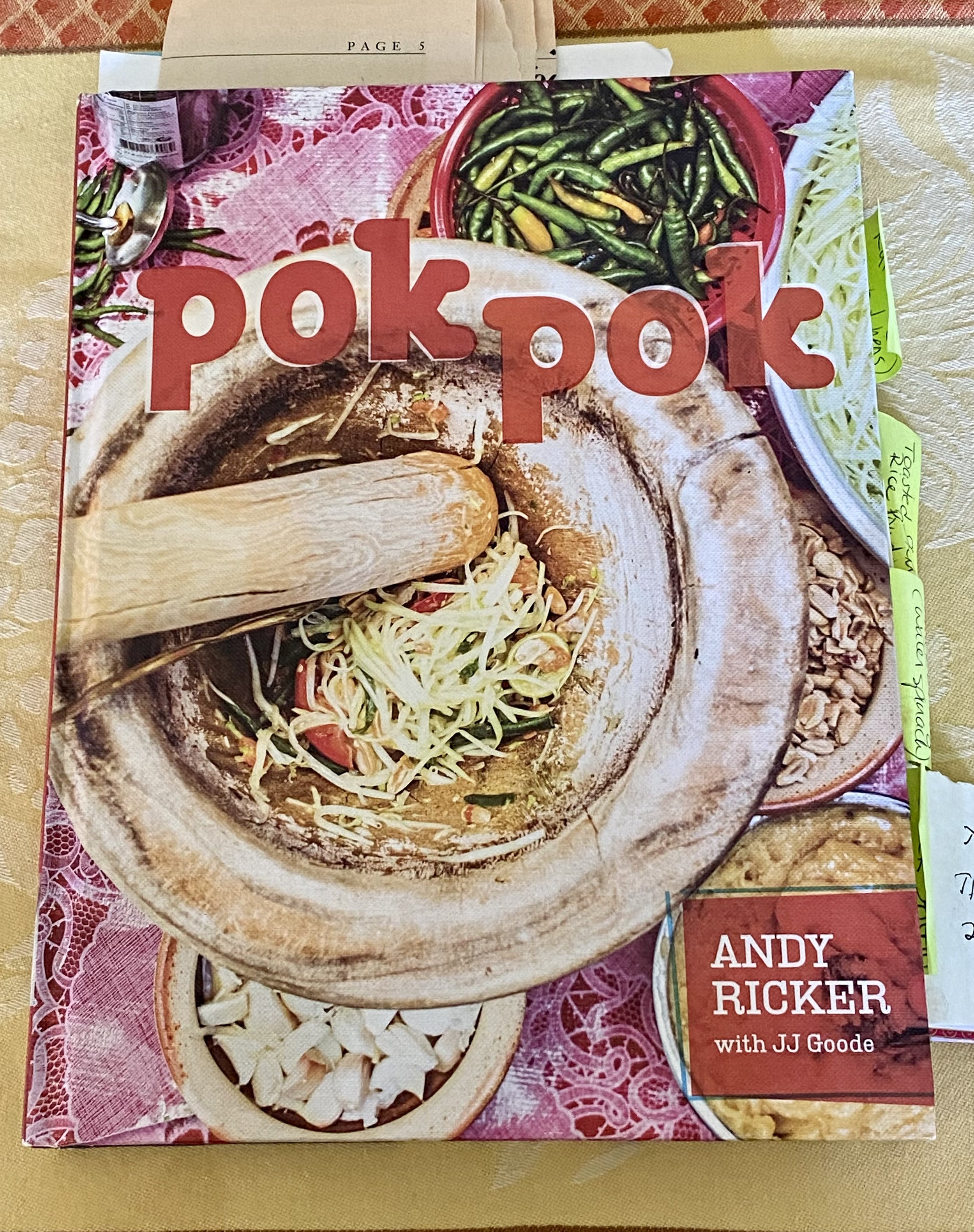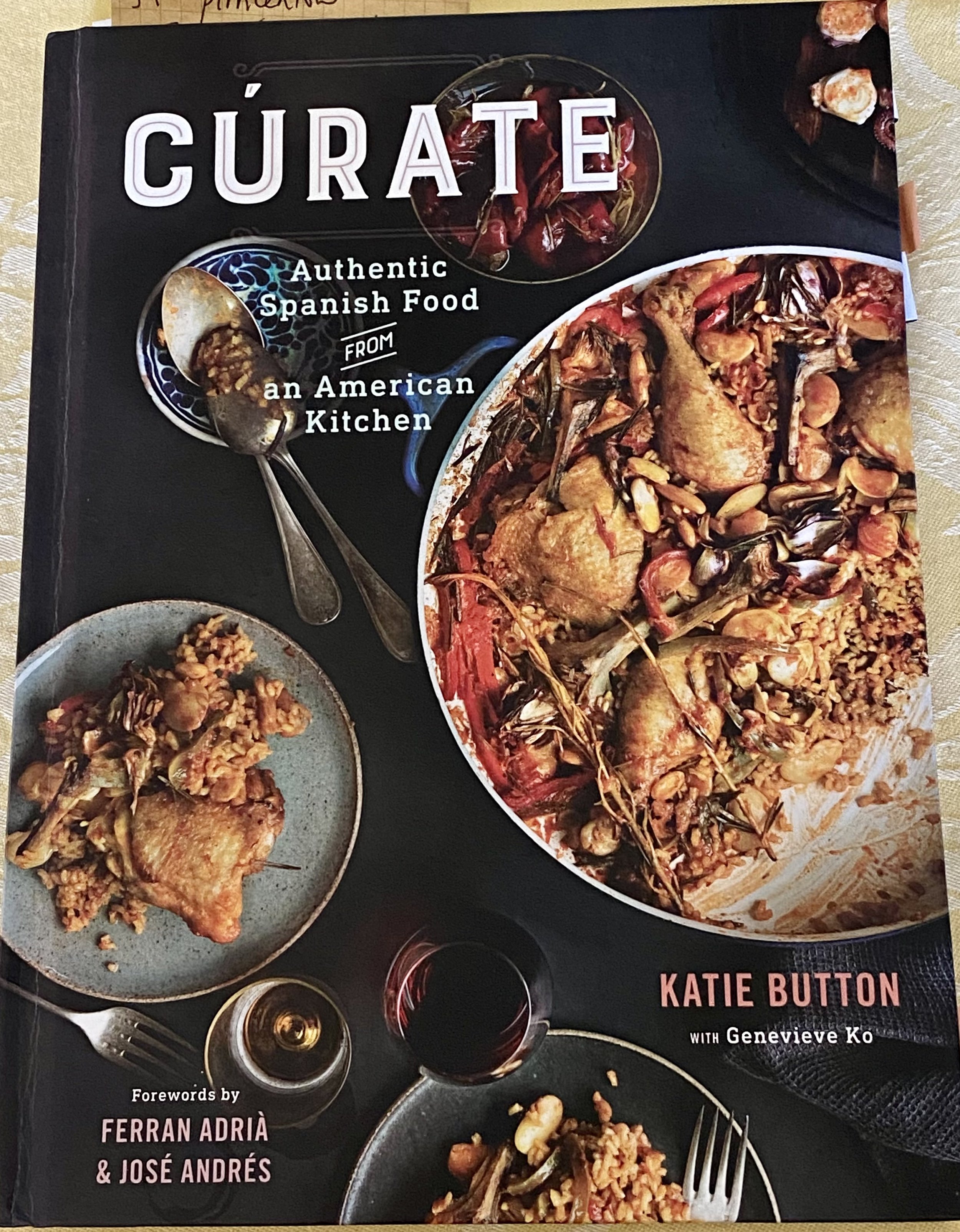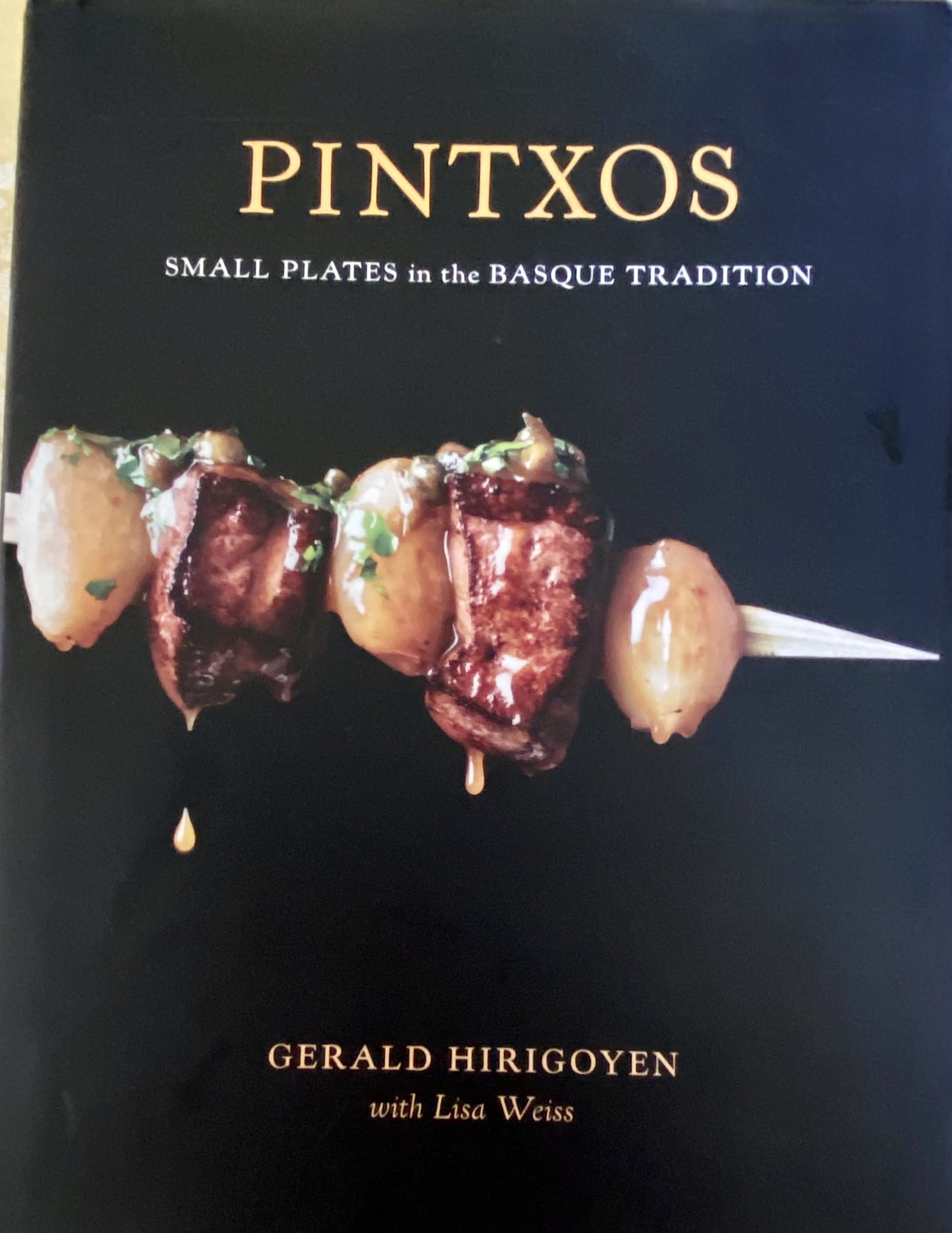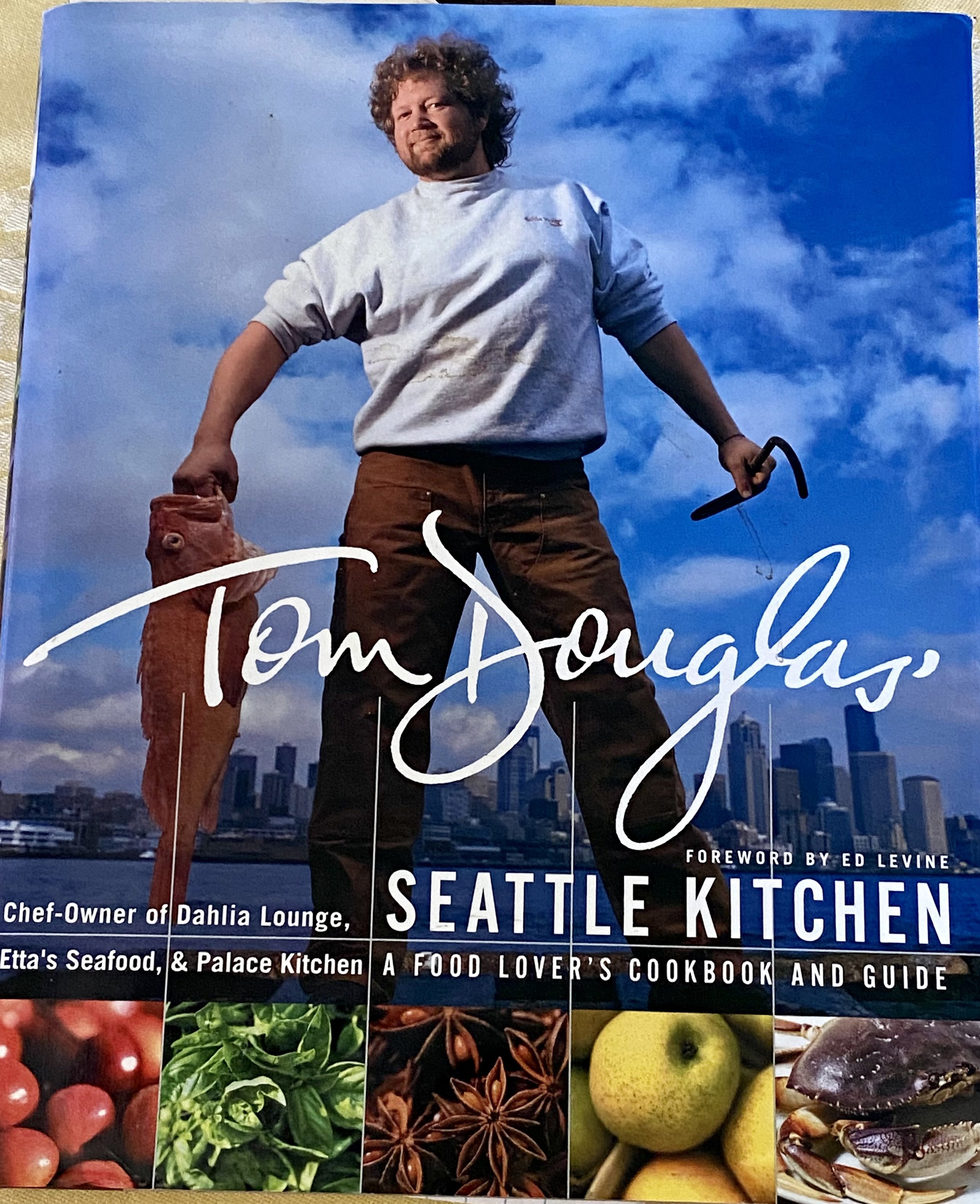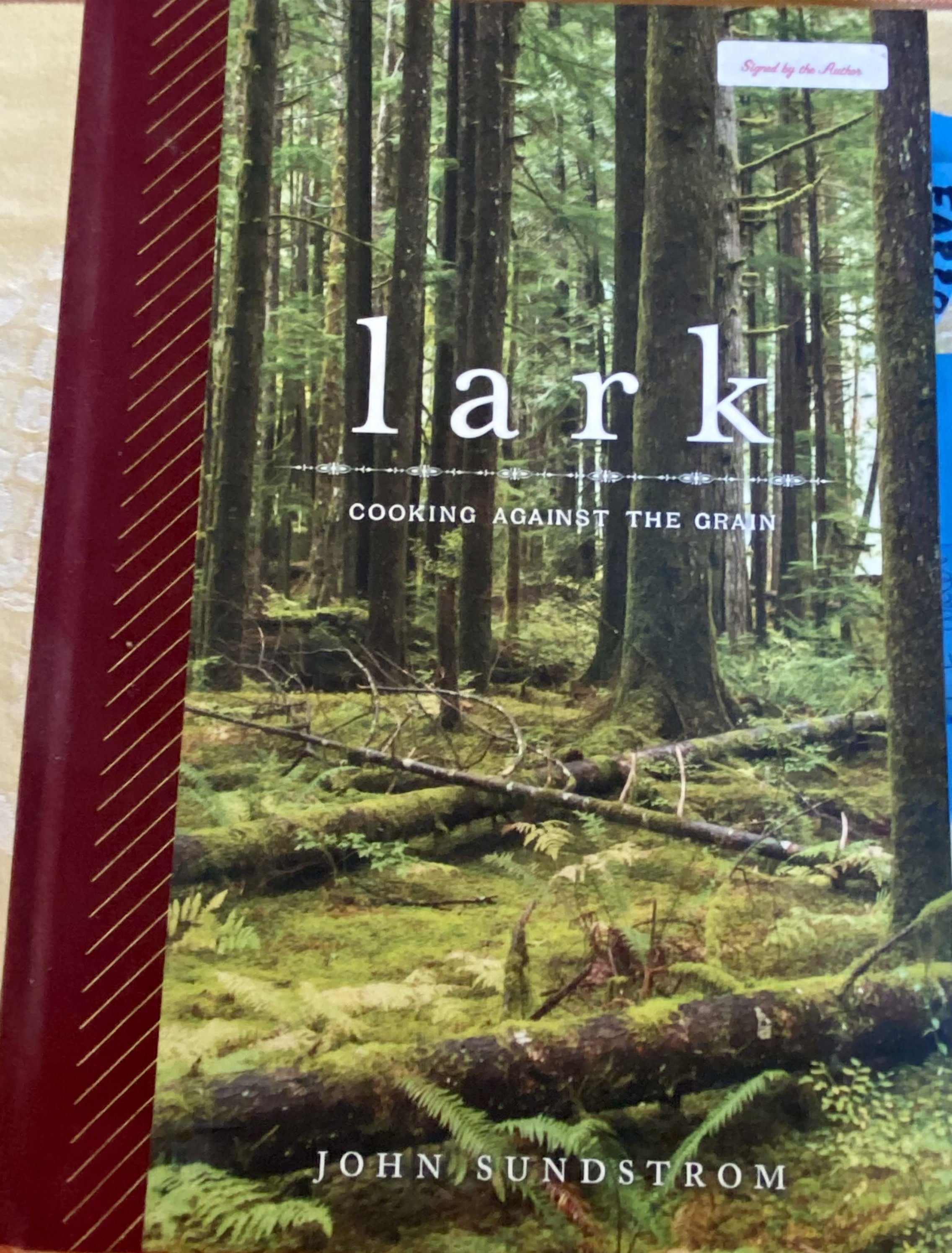My Favorite Restaurant Cookbooks
Presentation for Women’s University Club Book R&R July 19, 2023
I love these books. They are coffee table art books to me. I can spend hours reading the story of the chef, sometimes with tears in my eyes, how the recipes came to be and see the cooking style develop as the book progresses. I study the photography and compare it to the recipes spotting garnishes that aren’t listed or the reverse, where is the curled scallion garnish in the photo? If I love the restaurant, I have to buy the book. In some cases I buy the book because I doubt I’m going to the restaurant but I have to know about it.
What I have learned as a follower of chefs and their venues is that restaurants embrace publishing a cookbook to create a high profit margin souvenir in a low margin enterprise. If customers have had a marvelous evening and spent hundreds of dollars, another $40 for the memories is not far-fetched. If you love to read them and look at the photography you will love your purchase. If you plan to cook, be aware of two problems that plague celebrity chef cookbooks. One problem is the task of converting a recipe from large quantities to small quantities is not simple math. The management of the restaurant decides how much time and money they are willing to spend to test the reduced recipes maybe once, not at all or several times until it works in the new quantities. The publisher will have nothing to do with that. They may contribute proofreading but they don’t have test kitchens. Another daunting obstacle to the home cook is that every day the restaurant sets up the line with prepared sauces and prepped ingredients so that a tablespoon of this and that may be added to the entree on its efficient path down the line. It may have taken hours to prepare one of the sauces. To complete a restaurant entrée may in fact require working with two, three or more recipes. The possibilities for errors multiply with the sub recipes.
To save you from the heartache of disasters with expensive ingredients or dinner guests kept waiting for the meal to be ready, I find you need to read the ingredient list carefully with common sense as your guide. Think about how long it will take you to do everything. For the best results put all the ingredients out on the counter, the ‘mise en place’ step restaurants don’t skip. This is why Ina Garten is a billionaire. There’s never any suffering in her recipes. One last thing I usually do is cook everything or as much as possible ahead of time so on the day of the event so my kitchen is clean and I can spend time on other things.
I’ll begin with the chef I think is the top of the heap for some years, the reigning king who has yet to be deposed by some young wonder. The secret to the success of Yotam Ottolenghi is his recipe development team that is fully staffed to create perfect recipes for his column in the Guardian newspaper, his cookbooks and his restaurants.
UK - London - Nopi, Notting Hill, many others
Jerusalem the cookbook by Yotam Ottolenghi and Sami Tamimi
I thought I knew about Middle Eastern and Mediterranean flavors from reading books by Paula Wolfert, Claudia Roden and Kitty Morse, but Ottolenghi creates a finished product that is not quite like any of those well-known interpreters. They are well respected authors, historians. He is a successful restauranteur in London with many restaurants, one upscale tasting menu style place, Nopi, and numerous stylish, take out dine in, café, deli, neighborhood places. His popularity and vegetable focus led to becoming a vegetarian recipe columnist for the Guardian; and an author with many cookbooks; and television host/star of a PBS show Mediterranean Feasts and more. His palate developed growing up in Jerusalem, a crossroads for immigrants bringing their food with them and leaving behind a trail of tastes absorbed by the community. In clear prose he chronicles peoples from far away centuries and countries, such as Sephardic recipes from the Spanish Inquisition, 19th century Templars (Germanic protestants), Ethiopians, Russian Christians and Bukharan Uzbekistan Jews. Ottolenghi's PR story always highlights his head chef and co-author of Jerusalem, Sami Tamimi, who also grew up in Jerusalem, but on the other side of town where the Palestinians lived. They met in London, became friends and business partners. The heft of that collaboration and probably others, elevates a familiar dish to a higher level. What can we do to improve it?
Ottolenghi is famous because his food tastes so good, but you may not feel the need to make three garnishes for one dish as a restaurateur does, so I say try them all the first time and eliminate one or more the next time. He encourages being flexible with ingredients to suit you and your time available to run out for missing ingredients. One example of an herb combo that sounded weird to me at first, but I love the result, is putting lavish quantities of parsley, cilantro and mint together in so many dishes. He never serves yogurt plain, but always seasoned and with a little oil or cream in it, which makes it taste like a special sauce. After you cook a few of his recipes you’ll see the pattern of how he layers on flavors to build a bold result. You can apply that to recipes you already know that are plain. He may have grown up in Jerusalem, but he is a global cuisine guy who embraces Malaysia as easily as the Mediterranean. He is not hung up on LOCAL, go for quality of what’s available to you.
I own four of his books but the one I use most is the Jerusalem Cookbook. Here are a few of my favorite recipes:
Mixed bean salad (page 42) the dressing elevates humble green bean to something fascinating.
Root vegetable slaw (page 49) A colorful winter slaw concept that uses beets, carrots, celery root and kohlrabi, raw, cut in matchsticks; a simple vinaigrette brought to the boil and then poured over the vegetables. Once you see how it works to retain color and crunch but not be raw, you can adapt the technique to any other any vegetables you choose.
Chicken with caramelized onion and cardamom rice (page 184) Chicken and rice is comfort food around most of the world. I have made this many times, for company or for our lunch. This recipe is a crowd pleaser. You might want to try it first to introduce Ottolenghi flavors to your group you cook for. Don’t be put off by needing currants, cardamom seeds, whole cloves, cinnamon sticks, parsley, dill and cilantro.
Prawns, scallops and clams (page 233) We call this Ottolenghi Cioppino, a favorite of the man in my life. The trick of simple tomato sauce from canned tomatoes, made ahead, days or months to have in the freezer, and heat up when you’re ready to cook the fish, makes it very easy for a weeknight dinner or company. If the sauce is hot in a 475 degree F oven, add all the shellfish and bake 5 minutes for gently cooked seafood. It doesn't take long to cook or to turn into rubber.
US- Asheville NC - Curate Tapas Bar
Cúrate: Authentic Spanish Food from an American Kitchen by Katie Button and Genevieve Ko
Curate begins with Katie Button, a smart woman engineer who falls in love with a Spaniard, Felix, and realizes that engineering is too boring for her, she drops out of her PhD program and trains at a few restaurants including El Bulli, the modernist cuisine temple on the Costa Brava in Catalonia where Chef Ferran Adria earned three Michelin stars before the restaurant morphed into a creative center. He thinks highly of how quickly she learns in the kitchen. He feels the same about her husband who works the front of the house and as beverage manager. Her parents see how this is going and offer to buy her a restaurant in the States if she’ll come home. I can’t remember why they chose Asheville but they blew up the restaurant scene there by opening Curate in 2011. Asheville is quite creative these days. The cookbook Curate is wonderful to read and hold in your hands. The concept is high quality Spanishs from all over the country. The Curate empire now includes a wine bar, bodega, private label packaged food, and culinary tours of Spain and other Mediterranean countries. Ten days of dramatic landscapes, RESTAURANTS, WINERIES AND FARMS. My sister has a friend who has been on several Curate tours and sometimes I think this is how I’ll join the ranks of those who love tours.
The recipe I have cooked the most is Grilled Spice Rubbed Hanger Steak. This is for the beef lovers in your life. A hanger steak is a butcher’s cut, not necessarily in the meat rack at your grocery store but any butcher will cut you one. The rub is: Spanish smoked paprika, cocoa, cumin, allspice, cinnamon and a pinch of cayenne. the meat is cooked on the grill rare or medium rare and sliced thick.
The second most cooked is Eggplant with Honey and Rosemary. That may sound weird to you but Andalusians have enjoyed it for centuries and everyone I have served it to loved it. I don’t tell in advance what it is to prevent any naysayers before they taste.
Wilted Spinach With Pine Nuts, Raisins And Apple is a Catalonia staple. Easy. Make the hot dressing first. Toss it. You all know how quickly spinach wilts.
Seafood Stew. I can’t resist seafood stews. This one is as Katie says, “Stewier than paella, but not a soup.” She makes her own seafood stock which is not too long or complicated, but I know where you can buy good fish stock is you want to skip ahead. I never use lobster because I really don’t want to deal with live lobster. That’s personal. With a whole snapper or other white fish and mussels, it’s pleasing and seems special.
Creamy Salt Cod and Potato Spread This recipe is a hack on salt cod that I think is genius. I have worked with dried salt cod, it can be hard to find and of mixed quality. She salts fresh cod and lets it sit in the refrigerator and then rinses it and lets it sit in fresh water. The result is less salty and silky smooth with a delicate fish flavor. You can serve this in individual casseroles at the table as a first course, or in a serving dish at cocktail time to share with a crowd on baguette toasts—or stuffed inside a canned pequillo pepper.
Santa Fe, NM - The Coyote Cafe
Mark Miller
MM Is an alumnus of Chez Panisse in Berkeley, CA whose first venue was 6th Street Grill that served trendy gilled foods, some seasoned with the first South Western ingredients I had ever heard of. The Coyote Cafe came soon after that. It was super cool in that high desert landscape. I started studying chiles and learned the names of many and what to do with them. I was given the cookbook as a wedding present and read it cover to cover several times and used it as a reference for chilies and sauces.
Yucatan Stuffed Wild Turkey: I made Thanksgiving dinner several times in a tiny apartment with a tiny stove and oven that a 10 lb turkey would just barely fit in. Everyone who ate it went nuts with happiness. This recipe will get your taste buds wrapped around the carousel of flavors of south western cuisine. I never found a wild turkey but I was meticulous about assembling the stuffing which included black beans cooked in chipotle purée, rice, shrimp, oysters, pumpkin seeds with a purée of cascabel chilies, Achiote seeds, marjoram, orange juice, lime juice, cilantro and orange zest. You would think 3 hours of baking the turkey would make mush of the stuffing, but it was amazing.
Pipian Rojas: the ultimate garnish for grilled meats is from the Montezuma days before the Conquistadors arrived. Pipian is pesto-like and made with pumpkin seeds or nuts and seasoned with ancho and guajillo chilies, onions, tomatoes, cinnamon, cloves and allspice. If you’ve been to Santa Fe you must have had it.
Sautéed Duck Breasts with Wild Mushrooms and Corncakes: popular ingredients at the time, this could be a Tom Douglas recipe or a few others who were devoted to the medium rare duck breast fanned out on the plate on top or underneath a killer sauce. No chiles in this. But the mushroom sauce has a generous amount of chanterelles, morels, and porcini.
Portland OR - Pok Pok
Pok Pok: Food and Stories from the Streets, Homes, and Roadside Restaurants of Thailand by Andy Ricker and J. J. Goode
Thirty people are waiting in the rain in front of a yellow shack or house, a few huddled under a standing umbrella, most getting their hoodies wet and not seeming to mind. It's two PM on Saturday afternoon and business as usual at Pok Pok on SE Division Street in Portland, Oregon, rain or shine. This is where the Pok Pok empire humbly began in 2005. Andy Ricker was the James Beard restaurant winner in 2011 beating out our own Ethan Stowell. At one time there were outposts in NY and LA. Covid killed the empire in 2020. Very sad.
In its heyday, you began with cocktails crafted especially for the intense food, a platter of wings, one half of a roasted hen and the papaya salad. Then order a few more things
Every bite transports your body and mind to someplace you haven't been before. It's stimulating, invigorating, intoxicating. It's almost like zip-lining. You don't want to stop even when you aren't hungry anymore. You want the experience to go on and on. That's the key to Andy Ricker's success. He had the experience traveling and wanted to try to duplicate it. As he says, it's not authentic or traditional, it's his memory of what it was like on the road in Thailand over 20 years of traveling there.
Once you've been to the shrine, you've got to have the book, a Weber charcoal grill, and a rotisserie attachment. I make the famous hen dish at least once a year. It’s standard party food and summer BBQ food. Everyone loves it. It juicy, sweet, tangy and not insanely spicy. You can smell the lemongrass, cilantro and garlic while it cooks and when you eat it. Two whole chickens or four hens fends quite a few people when it’s cut up and served with several side dishes.
Andy Ricker is a good writer who speaks clearly and naturally. He tells about the dear friends he's made along the way to creating the restaurant and the book. He gives lots of options and is insistent there are many ways to do things.
Kai Tang (Charcoal rotisserie roasted natural game hens stuffed with lemongrass, garlic, pepper and cilantro served with spicy sweet/sour and tamarind dipping sauces. The dish that was Andy Ricker's inspiration for Pok Pok.) he provides three methods of cooking the birds, in the oven, or on a grill or rotisserie. Do what is easiest for you because the flavor and texture will be phenomenal which ever path you take.
Making this recipe completely requires also making: Marinade, two basting sauces (a honey water and a Tamarind based sauce) and two dipping sauces at the table plus a garnish of (Fried Shallots and Shallot Oil—I make fried shallots frequently because they are an excellent garnish on many dishes and to have the shallot oil on hand means you can quickly slap it on bread or sauté any protein or vegetable and immediately have a delicious, complex dish.
Papaya Pok Pok (Spicy green papaya salad with tomatoes, long beans, Thai chile, lime juice, tamarind, fish sauce, garlic, palm sugar, dried shrimp and peanuts.)
Ike's Vietnamese Fish Sauce Wings (Half dozen fresh whole natural chicken wings marinated in fish sauce and sugar, deep fried, tossed in caramelized Phu Quoc fish sauce and garlic and served with Vietnamese table salad.) Andy says this is the recipe that paid the bills and made other things possible. I have done it. People love it but wow it’s messy.
Laap Pet Isaan, minced duck salad; easy and fancy enough to take to a nice party and wow the crowd.
Phak-Bung Fai Daeng, stir-fried water spinach; I traveled 3 months in SE Asia in 2002 and ate this spinach dish most every night. It’s smoky from Thai oyster sauce
Cu Cai, pickled carrot and daikon radish. This is a quick pickle that can sit for an hour or a day. It’s good side dish with Ike’s Wings, spicy foods or American BBQ.
San Francisco, CA - Piperade
Pintxos: Small Plates in the Basque Tradition by Gerald Hirigoyen and Lisa Weiss
As my friends know I fell hard and fast for Basque cuisine as a college kid studying abroad. I was so young, dumb and naive, I told my mom I was in sort of a Hemingway study group. I told my friends I was going to run with the bulls in Pamplona. I actually believed that until the day of the event and got a good look at the race course through town and the loud, annoyed bulls ready to kill anyone who got in their way. Lucky for me I was able to back away into an empty cafe and have a cup of coffee or something stronger to celebrate my decision to remain alive. There was definitely human blood spilled on the streets that day and I was so happy none of it was mine.
Piperade is a SF Basque restaurant I have visited many times since it opened in 2002. I own two books from the Chef and have read a third. Chef Gerald Hirigoyen born French Basque, trained in Paris before coming to the states. He was an owner of several restaurants focused on French cuisine but he missed his Basque heritage flavors. He now calls it West Coast Basque Cuisine. Fair enough. Always be Basque wherever you are, that's the Basque expatriates’ philosophy around the world. The Basques have always been isolated by their landscape, the Atlantic and the Pyrenees Mountains, a mountain culture by the sea. Their food is seasonal and regionally specific. The eat a lot of seafood from the ocean and rivers. Sheep flourish in their climate and landscape. Bayonne pigs with a diet of chestnuts and acorns are admired around the world for their ham cured with Basque salt as well as sausages, and pates. The Basques grow their own variety of peppers, piquilloes, that are delicious as roasted vegetables stuffed with salt cod or tuna and make a powdered seasoning, piment d’Espellette that’s instantly recognizable by its aroma and flavor. It’s easy to find roasted piquilloes in a jar or can. They have a rich flavor and are mild. Salt cod is still very traditional and appears in many dishes. Because of mentioning salt cod recipes in Curate, I’m not going to dive into salt cod from Piperade.
The Piperade experience is what you always hope for in fine dining but don’t always receive: A warm welcome, prompt and knowledgeable service. You never feel rushed which is so European, with the premature removing of plates, which drives me nuts, or given a check while you’re still eating so the servers can turn the table one more time. To keep this presentation moving, I’ll just mention a few Basque recipes that are historical or a technique that’s worth knowing.
Monkfish in Olive Oil, Tomato and Saffron: This is a poaching technique well worth learning. It’s easy, infuses flavor and creates a silky texture in the fish. Creating the oil flavored with onion, garlic, saffron and fresh heirloom tomatoes, olives capers and fresh basil requires simmering for 20 minutes but once its ready, the fish cooks in 5 minutes. And you can reuse the oil.
Marmitako (pg 104) Is a fisherman’s stew made on board while fishing for tuna. It would vary by what’s on hand but the restaurant version includes tuna, potatoes, onions, garlic, chiles, white wine, vegetable stock and saffron.
Pintxos: the famous bar bites on a skewer or on small plates. These can be made from pantry ingredients and the most versatile single ingredient to have on hand are guindilla peppers. Good for one or two bites, long, thin and curly, mildly hot and packed in a brine in a jar, they are the backbone of many skewered favorites. It can be as simple as adding an olive or an onion or a piece of cheese or sausage or anchovy. Perfect with a glass of wine.
Seattle WA - Lark Restaurant
Lark: Cooking Against the Grain by John Sundstrom
There are so many new restaurants in Seattle pushing the envelope on local food and nose to tail processes that hanging in for the long haul is noteworthy. John Sundstrom is continuing to take Pacific Northwest products to a delicious, aesthetic and sumptuous level that so many aspire to, but few accomplish with such simplicity. He opened Lark in 2003 after working with Tom Douglas and others. He moved to his bigger space in 2014. Nearby he has a pizza and sandwich outfits that provide a lunch option Lark doesn’t offer. Going beyond saying seasonal, he has invented his own three seasons that better describe our life and produce here: Mist, Bounty and Evergreen. The recipes in the book and the app are organized by the seasons. Lark is still ingredient driven, not stressing exotic techniques but handling the food minimally and the service is sweet. The wine and beverages are excellent too. Lastly, there is elbow room, which I really appreciate and find essential to enjoying the experience at this high price point-equal $$ to Canlis.
Lark's pork shoulder pave with radicchio and cherry garnish: is sort of a fancy dish for a party. Basically pulled pork that through pressing and refrigerating is turned into small squares, dusted and sautéed to create a crispy exterior and melting interior. Local cherries and radicchio in a vinaigrette are served alongside. Colorful, refreshing, lite. At the restaurant pork tenderloin is served on the same plate.
Lark's farro with mascarpone and arugula: is a signature side dish made with the local bluebird farms brand of farro. Easy.
Wild mushroom RISOTTO: Briefly in the fall you can buy fresh chanterelles, lobster mushrooms and porcini mushrooms. this is the dish to show case the bounty. You only need 3 oz of each mushroom. The mushroom stock requires 1 lb of cremini mushrooms. I appreciate his economy.
Seattle WA - Dahlia. Palace Kitchen and many others
Tom Douglas' Seattle Kitchen: A Food Lover's Cookbook and Guide by Tom Douglas
This was my first TD book. I loved it and learned to shop around Seattle with it to places like Mutual Fish on Rainier Ave S. The Dahlia was a celebration place for us for a while. The Palace Kitchen was always my favorite of his restaurants and we went there more frequently. I like Lola’s. My father-in-law preferred Ettas, so I had a few meals there too. So many of the others in SLU I went to once out of curiosity. They are all closed now. TD is popular because he understands the warm welcome and good food. I have based quite a few parties, particularly summer dinners on his books.
Lobster and Shitake Potstickers with Sake Sauce: A top selling, signature appetizer always on the menu. To make this recipe you need only one grocery store lobster tail or about 1/2 lb plus 1/2 lb. Shrimp. I learned to make potstickers from Tom Douglas and now fill them with anything I have leftover, meat or vegetable for an easy, inexpensive but stylish appetizer. The sake sauce is versatile, good on any fish or chicken.
Etta’s cornbread pudding: The restaurant serves this with pit roasted salmon. I have made this many times as a BBQ side dish or Thanksgiving side. The cornbread is nothing unusual. The pudding features fresh herbs, eggs and cream. It’s easy, sits on a buffet for hours and tastes good.
DUNGENSS CRABCAKES: I have probably made this recipe more than any other TD recipe and now I make crab cakes with no recipe. He believes in white bread crumbs and a little mayo that’s incorporated in the recipe. You won’t know you’re making mayo.
Here are a few more venues and books I wish I had time to talk about:
Seattle WA - Rover’s by Thierry Rautureau
Portland OR - Wildwood By Cory Schreiber
Washington VA - The Inn at Little Washington Cookbook: A Consuming Passion by Patrick O'Connell
NYC - The Union Square Cafe Cookbook: 160 Favorite Recipes from New York's Acclaimed Restaurant by Danny Meyer andMichael Romano
Sydney AU - Tetsuya by Tetsuya Wakuda

